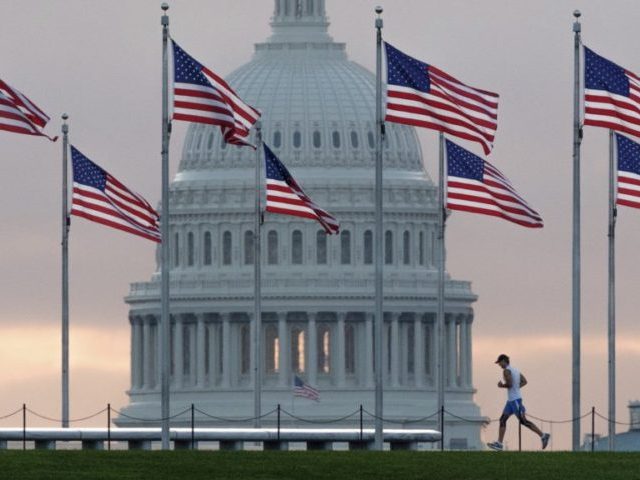A new analysis from Congress’s nonpartisan budgetary scorekeeper says economic growth will pick up and the government’s budget deficit will rise toward $1 trillion in the next couple of years thanks to the combined effect of President Donald Trump’s tax cuts and last month’s bipartisan spending bill.
The Congressional Budget Office on Monday said the federal budget deficit will total $804 billion this year, up from $665 billion last year. It forecasts a deficit exceeding $1 trillion a year starting in 2020.
Economic growth is projected by the CBO to jump above three percent this year, exceeding the Trump administration’s goal and far above the less than three percent the CBO projected before the tax cuts and spending bill. Faster growth is expected next year, as well. After that, however, the CBO expects economic growth to slow, largely due to slower growth in the labor force.
Although both the tax cuts and spending bills are often described as “budget-busting,” long-term interest rates tell a different story. On Monday, the 10-year Treasury Note yield was 2.7865 percent, up only a bit from the Friday yield of 2.779 percent. Yields move in the opposite direction from bond prices, rising when the prices of bonds paying fixed interest rates fall. Recent bond yields suggest that investors expect growth to remain strong enough for the Fed to continue its program of gradual interest rate hikes but do not see a budget crisis looming.
The rising deficit means that a larger part of the government’s spending is paid for voluntarily by investors rather than compelled payments taken from taxpayers. The CBO says that government tax revenue is expected to total 17.5 percent of gross domestic product between 2019 and 2028, a decline from last year’s estimate of 18.2 percent. Spending over the period is expected to be 22.4 percent of GDP, unchanged from last year.
The CBO estimated that potential economic growth will be elevated over the next two years but long term will average 1.9 percent a year.
“Productivity growth returns to nearly its average over the past 25 years and recent changes in fiscal policy boost incentives to work, save, and invest; nonetheless, economic growth is held down by slower growth of the labor force,” the CBO said.
A slower growing labor force combined with additional investment could mean higher wages for many Americans, particularly middle and lower-income Americans whose wages have stagnated in recent years. More speculatively, higher wages and less competition in the labor force could actually raise the fertility rate among Americans, ultimately contributing to a larger labor force than the CBO currently expects.

COMMENTS
Please let us know if you're having issues with commenting.